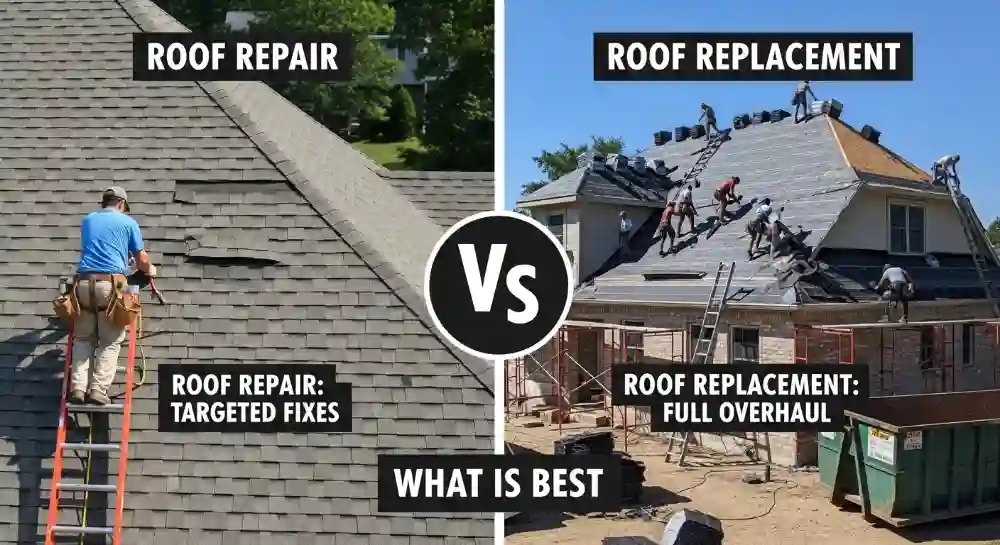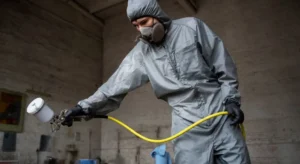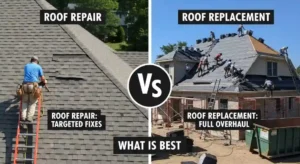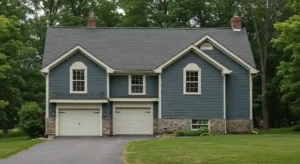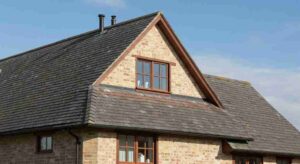As a property owner, you’ve probably asked yourself the same question: “Do I just fix my roof or replace it altogether?” It affects the safety, worth, and profitability of your home. The fact is, there’s no single right response. The decision between roof repair vs replacement depends on several variables, including the age of the roof, the degree of damage, a prudent cost-benefit analysis, and the strength of the existing roof structure.
In addition to these technical details, consider the local climate, how the materials will blend in with the rest of the structure, and any aesthetic issues that may arise from mismatched work. The best choice is to keep your home intact for generations of your family.
Roof Repair vs Roof Replacement: What’s the Difference?
To start, let’s clearly define the options inherent in roof repair vs roof replacement.
Roof repair is the fixing of minor or discrete damage on a limited section of your roof. It is a precise fix, akin to repairing a few missing shingles or sealing a small roof leak. It is a temporary fix, infusing life into an otherwise good roof. A partial roof repair is below this, just replacing only the area that is needed.
Replacement of a roof is a significant task that involves removing the entire existing roofing material down to the decking. This entails total replacement of underlayment, decking, and roofing material. Although it is expensive, it gets a brand-new roof system and full long-term protection.
There is, however, a compromise that is explained by another term, namely, re-roofing or roofing over the old roof. Here, new shingles are set over the old layer without taking out the old shingles.
This is only feasible if you already have a single-layered installation of shingles, and this is a roof rehabilitation to postpone full replacement. This is where the overall description of the rooftop leads you to the best solution.
Key Factors That Decide Between Roof Repair vs Replacement
This section examines the main attributes that guide your decision on roof repair vs roof replacement.
1. Roof Age
The roof age would be the strongest one. There is an approximate age for every type of roof: asphalt shingles, 20 to 30 years; metal roofs, 40 to 70 years; and tiles, more than 100 years. Knowing how long a new roof will last will allow you to make the right choice.
If your asphalt shingle roof is more than 20 years old, even modest repairs are not worth the money because it will need to be replaced eventually. The roof’s age is more significant than the price of small repairs, and you will have to contend with the roof replacement cycle.
2. Damaged Signs
You shall. Look for obvious roof leaks in your home, as they are one unmistakable indication of problems. On your roof, check. Loose or broken shingles, excessive granule loss (the granules that provide the color to the shingles), and curled shingles.
One of the more obvious indications is a “nail pop ceiling,” when the roof drywall tape is pulled off as a result of a popped roof nail. If you suspect a leak, consider leasing roof leak detection equipment or hiring a contractor to help locate the source of the leak. In cases of extensive damage, even minimal repairs cannot compete with complete replacement.
3. Structural Safety and Stability
Your roof is not just waterproofing, but it forms part of your house’s structure. If you notice obvious sags, bows, or soft spots on your roof after standing on it, that is a serious problem. Those are usually indicative of the substrate material, i.e., underlayment, rafters, or decking, that fail due to extreme exposure to water or rot.
Roof inspection experts will attest to this; however, if it can be observed to sag or rot over time, the entire lot must be replaced. The regular use of a roof maintenance checklist will enable the observance of problems at their very beginning.
4. Weather and Environmental Conditions in the Locality
Local weather is an important factor for the lifespan of your roof and its waterproofing capacity. Freezing and thawing cycles, hail, snow load, and blistering temperatures further accelerate the degradation process. Heat, for example, will break down sealants, and hail brings about general and perhaps latent damage.
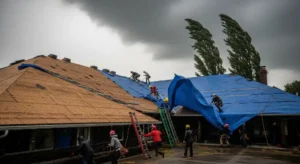
If your roof was severely battered during intense storms, then replacement may be the only solution to offer long-term protection. See our blog on the Top 10 Roof Materials for Hot & Cold Climates for material recommendations for your climate as part of your roof maintenance plan for your home.
5. Aesthetic & Compatible Material Issues
When you receive a partial repair, you’re always at risk of compatible materials being the issue, particularly with the older or older-design colors of shingles. When new shingles are installed on top of existing shingles, the color difference creates a flat “patchwork” appearance, which can significantly reduce your curb appeal and lead to aesthetic issues.
If you wish to maintain the resale value and looks of your home, then full and consistent replacement may be your best option.
Cost Analysis, Replacement vs. Repair
Comparing the costs is what makes the decision most difficult. A full financial analysis is key to settling the debate of roof repair vs roof replacement.
Repairing the roof will always be less costly in the short term. It’s wonderful if you are doing it for the short term or as a one-time incident. Multiple repairs over the long term, though, can drive the overall maintenance expense sky-high if the original roof is old and continues to create new problems.
A roof replacement is extremely expensive upfront, making it a costly purchase. However, it pays for itself multiple times over the years, thanks to its very long lifespan, included warranty, and significantly fewer issues requiring ongoing repairs. For a detailed breakdown of the total investment, see our guide on How Much Does a Roof Replacement Cost in 2025?.
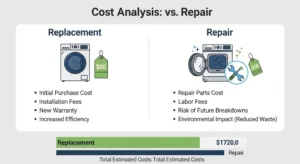
The following is a side-by-side comparison of the short-term vs. long-term cost difference:
| Feature | Roof Repair | Roof Replacement |
| Initial Cost | Low can be repaired on the spot | High, big investment |
| Longevity | Repair short-term (1-5 years) | Repair long-term (20+ years) |
| Maintenance | Extra long-term maintenance | Low long-term maintenance |
| ROI / Home Value | Little effect | Great ROI, enhances curb appeal |
| Best for | Single isolated damage, new roof, small area | Old roof, big damaged area, structurally unsound |
Replacement note usually succeeds. Ask yourself, typically, would homeowners remit for roof replacement? It usually covers loss that is “sudden and accidental,” i.e., by fire or storm, and not loss due to mere roof age or neglect. Understanding your homeowners’ roof coverage is crucial before taking a cost-saving financial action.
Roof Inspection & Maintenance Checklist
Maintenance is the key to a longer roof life.
Roof inspection reports provide a professional assessment of the roof’s damage level and overall condition, a crucial factor in determining whether it should be repaired or replaced. A professional roof inspection checklist goes beyond surface-level scanning; it’s more than just looking for surface defects, but also for less obvious conditions like nail pops, ventilation issues, and the onset of rot deck.
For the diligent homeowner, incorporating gutter cleaning, trimming overhanging branches, and routine visual roof checks into the roof maintenance routine is one of the easiest do-it-yourself tasks. Homeowner roof maintenance prevents premature roof replacement.
Insurance and Roof Coverage: What Homeowners Need to Know
It is always better to know your policy. Homeowners’ insurance typically covers losses resulting from sudden and accidental damage, but not from wear and tear. If you experience roof leaks due to a sudden storm, your policy may cover the cost of roof repair vs roof replacement. You need to verify whether home insurance covers roof leaks under various conditions.
One good argument is that a roof replacement would be considered by insurance as a repair if small and localized, but a big claim when it’s due to extensive storm damage. Always make sure to inquire with your provider about the extent of your insurance for roof replacement and homeowners’ roof coverage.
Roof Repair Techniques and Materials
Repairing the roof involves knowing how to do it properly and using the right tools. For small leak repairs, consider using roofing cement, a reliable roof leak sealant, or a roof leak sealer. For simple replacement of shingles, a standard roof patch material will suffice.
Over flat roofs, or on existing roofs, roof coating silicone or roof coating paint can be employed as a roof repair system to cover again. Application of a waterproofing membrane to walls is advisable in extreme circumstances or where leaks are significantly distant, providing long-term protection from leaks beyond the immediate edge of the roof.
When Full Roof Replacement Is Inevitable
Sometimes it won’t be economical to do. This is where there is perpetual dripping, overall deterioration of many slopes, a real safety hazard through loss of structural support, or where your roof is made up of a lot of old layers of roofing (which have to be removed before a new layer can be put on).
If a two-over-one ratio is in your consideration, remember that most states only allow two sheets of roof material under their laws. If two are already there, a tear-off replacement is your option. Having the entire roof replacement timeline in mind is the secret to budgeting time and money.
Contractor Selection & Licensing
The success of major repair or total replacement work hinges on hiring a competent contractor. Always request a bonded, insured, and licensed contractor. They should be able to offer professional roof inspection services and give open records.
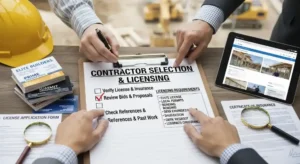
This exempts you from responsibility and guarantees that work will be done in adherence to the local building codes. Make sure your contractor is familiar with the specific state regulations; you can refer to our guide of Roofing Contractor License Guide for Every State.
Emergency Roof Repair & Preventive Maintenance
There has been a sudden, severe leak or storm damage that is an urgent situation to deal with. If it is a continuing leak, initially cover the space above the water to avoid interior damage. Usually with a temporary tarp. You will need to decide whether you can handle it yourself or if you must hire someone.
Small tarps are very cheap, but never try to get onto a busted roof by yourself. If badly damaged, call in a professional. Regularly review the roof maintenance checklist to avoid such incidents. For further information regarding what should be inspected, read our article on 10 Warning Signs Your Billings Roof Needs Immediate Attention. This, as a preventative measure, is roof restoration that postpones total replacement.
Long-Term Roofing Plan: From Maintenance to Replacement
It is helpful to think about the lifespan of your roof as a cycle: inspection, minor repair, restoration (such as coating), and ultimately replacement. This is the lifecycle of a roof. Preventative roof maintenance activities, such as removing debris from the roof and refilling missing shingles, can lead to significant long-term cost savings.
Performing it ahead of time will extend the life of your roof and postpone replacement. For all your future planning needs, click here for The Complete Roofing Buyer’s Guide.
Conclusion
Ultimately, making the choice of roof repair vs replacement is extremely subjective. If your roof is comparatively new, the damage is isolated, and the underlying structure is not damaged, a repair is the penny-pinching, cost-cutting option.
But if your roof is nearing the end of its lifespan, has extensive damage, or has significant underlying structural damage, complete replacement is a prudent long-term investment in security and peace of mind. The last success aspect is objective data. We strongly advise engaging a professional roof inspection service for a customized assessment based on your roof’s condition, local climate, and budget.
Frequently Asked Questions (FAQs)
Q: When do I replace one roof or repair one?
Replacement is needed when the roof age is over its peak years, the roof damage is significant, or the structure is questionable.
Q: Will homeowners pay for a replacement roof if there is already damage?
No, generally speaking, home insurance pays for sudden, accidental loss (e.g., damage from a storm), not normal wear and tear or roof aging.
Q: Is it acceptable to put a roof on a roof?
Only if you have a single layer of shingles behind you, the roof deck is sound, and you are doing this as a temporary roof improvement.
Q: What are the main indicators of roof damage that one should watch out for?
For warning signs of damage, look for interior roof leaks, abnormal granule loss, curled or broken shingles, or easy-to-spot sagging.
Q: In what way does a professional roof inspection checklist assist in deciding to repair or replace?
A professional roof inspection checklist gives you an unbiased report of the degree of damage and stability so that you can make your decision based on the real condition of your roof.
